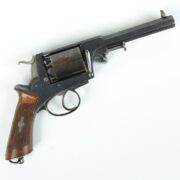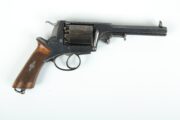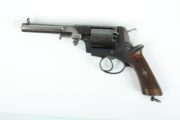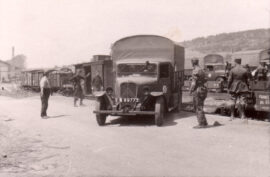
15 Austrian Adams-Scheinigg Army Revolver, 1860
Fotogalerie



This double-action revolver (with the possibility to pull the cock manually and use it as a single-action revolver) was designed and manufactured by Josef Scheinigg. The design of this weapon resembled the revolver for which Robert Adams (1809–1870) received a British patent in 1851 and which was improved by English officer Frederick Beaumont in 1855. A special feature was the long spines in the chambers which were struck by the bullets when loading, increasing the tightness of the chambers. This was invented by French Colonel Louis Thouvenin in 1843 and was subsequently applied to military rifles in France, Belgium, Austria, and many other countries. Josef Scheinigg was the first to apply this idea to a revolver design. However, the spines were not successful; in particular they prevented easy and effective cleaning of the chambers from powder residues and other impurities. Therefore, they were no longer manufactured and were even removed from the cylinders of older models. The gun was of the same calibre as other Austrian military weapons of that time (13.9 mm), and was tested by the army between 1860 and 1861, but was not introduced into the arsenal (the Lorenz percussion pistol of the 1862 model won). However, because of its robustness, range and calibre, many officers used it as their private weapon during the war against Prussia in 1866. The revolver was also produced in smaller variants (11.0 and 9.0 mm calibres).
Josef Scheinigg is mentioned in Ottakring (a suburb of Vienna) in connection with Leopold Gasser, who joined him in 1858 as a journeyman.
Overall length 315 mm, barrel length 155 mm, 13.9 mm calibre.
Aktuálně

Pojízdné zařízení pro očistu bojové techniky TZ-74 GABRIEL

Oceňovaní spojenci - Pozemní útvary československé branné moci v bitvě o Francii očima francouzského velení

Vánoce a přelom roku v zahraniční misi na Slovensku v roce 2022









